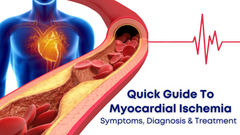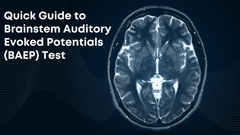Understanding Asthma- Its Challenges and Diagnosis
World Asthma Day, observed annually on the first Tuesday of May, is a global initiative aimed at raising awareness about asthma, a chronic respiratory condition that affects millions of people worldwide. Asthma is characterized by inflammation and narrowing of the airways, leading to recurrent episodes of wheezing, breathlessness, chest tightness, and coughing. On this important day, let us delve into the complexities of asthma, including its definition, causes, challenges faced by individuals with asthma, diagnostic methods, government and NGO initiatives, and the significance of World Asthma Day. Additionally, we will explore the role of Clarity Medical's spirometric devices in promoting lung health and facilitating accurate diagnoses.
What is Asthma?
Asthma is a chronic respiratory condition characterized by inflammation and narrowing of the airways, which leads to episodes of wheezing, breathlessness, chest tightness, and coughing. These symptoms are often triggered by exposure to allergens, irritants, respiratory infections, physical activity, or changes in weather conditions. Asthma can vary in severity from mild intermittent symptoms to severe persistent symptoms that significantly impact daily life and require ongoing management.
What Causes Asthma?
The exact cause of asthma is not fully understood, but it is believed to involve a combination of genetic predisposition and environmental factors. Common triggers and risk factors for asthma include:
> Genetic Factors: Asthma tends to run in families, suggesting a genetic predisposition to the condition. Individuals with a family history of asthma or allergic conditions are at increased risk of developing asthma themselves.
> Allergens: Exposure to allergens such as pollen, dust mites, pet dander, mold, and certain foods can trigger allergic reactions in susceptible individuals, leading to asthma symptoms.
> Environmental Irritants: Irritants such as tobacco smoke, air pollution, strong odors, chemical fumes, and respiratory infections can exacerbate asthma symptoms and trigger asthma attacks.
> Respiratory Infections: Viral respiratory infections, such as the common cold or flu, can aggravate asthma symptoms and increase the risk of asthma exacerbations.
> Physical Activity: Exercise-induced asthma occurs in some individuals during or after physical exertion, particularly in cold, dry air or environments with high levels of airborne allergens.
Challenges Faced by People with Asthma:
Living with asthma presents various challenges that can impact individuals' physical health, emotional well-being, and quality of life. Some common challenges faced by people with asthma include:
> Managing Symptoms: Asthma symptoms can be unpredictable and may vary in severity from day to day. Managing symptoms effectively often requires ongoing medication management, environmental control measures, and lifestyle modifications.
> Limitations on Physical Activity: For some individuals with asthma, particularly those with exercise-induced asthma, physical activity may be limited or avoided due to concerns about triggering asthma symptoms.
> Medication Side Effects: Some asthma medications, such as corticosteroids or bronchodilators, may cause side effects such as weight gain, mood changes, or oral thrush, which can impact treatment adherence and quality of life.
> Social Stigma: Misconceptions about asthma and respiratory conditions may lead to stigma or discrimination, affecting individuals' self-esteem, relationships, and participation in social activities.
> Financial Burden: The cost of asthma medications, healthcare services, and equipment such as inhalers or nebulizers can impose a significant financial burden on individuals and families, particularly in low-income or underserved communities.
How Asthma Can Be Diagnosed:
Diagnosing asthma typically involves a combination of clinical evaluation, medical history assessment, and pulmonary function testing. Key components of the diagnostic process include:
> Medical History: A detailed medical history is essential for diagnosing asthma, including a review of symptoms, triggers, family history of asthma or allergies, and past medical treatments.
> Physical Examination: A physical examination may reveal signs such as wheezing, chest tightness, or prolonged expiration, which can indicate airway inflammation and narrowing.
> Pulmonary Function Testing: Spirometry is the primary pulmonary function test used to diagnose asthma and assess lung function. Spirometry measures the volume and flow of air expelled from the lungs during forced exhalation, providing objective measurements of airflow obstruction and lung function impairment.
> Peak Expiratory Flow (PEF) Monitoring: Peak flow meters are portable devices that measure the maximum airflow rate during forced exhalation. Regular monitoring of peak expiratory flow can help individuals track changes in lung function and detect early signs of asthma exacerbations.
What Government and NGOs Are Doing for Asthmatic People:
Government agencies and non-governmental organizations (NGOs) play a critical role in raising awareness, providing resources, and advocating for improved asthma care and management. Some initiatives and services provided by governments and NGOs include:
> Education and Awareness Campaigns: Governments and NGOs conduct educational campaigns to raise awareness about asthma, its risk factors, symptoms, and management strategies. These campaigns aim to reduce stigma, promote early diagnosis, and encourage adherence to treatment plans.
> Access to Healthcare Services: Governments and NGOs work to improve access to healthcare services for individuals with asthma, particularly in underserved or low-income communities. This may involve establishing asthma clinics, mobile health units, or telemedicine services to reach remote populations.
> Support Services: Support services such as patient education programs, asthma self-management classes, and peer support groups are offered by governments and NGOs to empower individuals with asthma to take control of their condition and improve their quality of life.
> Advocacy and Policy Development: Governments and NGOs advocate for policies and legislation that promote asthma-friendly environments, including smoke-free laws, clean air regulations, and school-based asthma management programs. These efforts aim to reduce exposure to environmental triggers and support individuals with asthma in their communities.
Importance of World Asthma Day:
World Asthma Day serves as an important platform for raising awareness about asthma and its impact on individuals, families, and communities worldwide. By increasing public understanding of asthma, promoting access to care and resources, and advocating for policy changes, World Asthma Day contributes to improved asthma management, better health outcomes, and enhanced quality of life for individuals with asthma.
Role of Clarity Medical's Spirometric Devices in Lung Health and Diagnoses:
Clarity Medical's spirometric devices play a crucial role in promoting lung health and facilitating accurate diagnoses of respiratory conditions such as asthma. Key features and benefits of Clarity Medical's spirometric devices include:
> Accurate Lung Function Assessment: Clarity Medical's spirometric devices provide accurate measurements of lung function parameters, including forced vital capacity (FVC), forced expiratory volume in one second (FEV1), and peak expiratory flow (PEF). These measurements are essential for diagnosing asthma, monitoring disease progression, and assessing treatment response.
> User-Friendly Interface: The user-friendly interface of Clarity Medical's spirometric devices simplifies the spirometry testing process for both healthcare providers and patients, ensuring reliable results and efficient data collection.
> Portability and Versatility: Clarity Medical's spirometric devices are lightweight, portable, and suitable for use in various clinical settings, including hospitals, clinics, primary care offices, and community health centers. This portability enables widespread access to spirometry testing and facilitates early diagnosis and intervention for individuals with asthma.
> Data Management and Analysis: Clarity Medical's spirometric devices feature built-in data management and analysis tools that allow healthcare providers to store, review, and analyze spirometry results efficiently. This comprehensive data management system enables longitudinal monitoring of lung function and supports evidence-based decision-making in asthma management.
Conclusion:
Asthma is a chronic respiratory condition that affects millions of people worldwide, presenting various challenges to individuals' health, well-being, and quality of life. Through increased awareness, early diagnosis, and comprehensive management strategies, the burden of asthma can be minimized, and individuals with asthma can lead fulfilling lives. Clarity Medical's spirometric devices play a vital role in promoting lung health, facilitating accurate diagnoses, and empowering individuals with asthma to manage their condition effectively. On World Asthma Day, let us reaffirm our commitment to asthma awareness, advocacy, and support, ensuring that all individuals with asthma receive the care and resources they need to breathe easier and live healthier lives.












